Agility
Agility Classes
“In an Agility Trial, dog and handler work together as a team combining athletic ability and training to negotiate a course of obstacles within a prescribed time period. As the dogs negotiate the course they must constantly be alert to the verbal cues and body language of their handlers.”
– The AKC
Houston Beginnings
The first AKC agility trial was held in Houston in 1994. To this day, the Houston area is a hotbed of agility and continues to produce many nationally ranked dog-and-trainer teams. Houston is also the home of a number of nationally recognized trainers, including Jane Simmonds Moake, Penny Weingartner, Rachel Long, and Sara Scott. Our instructor at Barkingham Palace, Candi Pearce, has trained and competed with each of these very knowledgeable pros.
Dog Obedience
We stress positive motivational techniques, where the dog is taught that there are rewards for proper completion of exercises.
How We Got Started
We first became involved in the sport of agility more than a decade ago with our golden retriever, Brittany, who has since passed. We continued along the agility trail with our male golden, Houston, who earned his AKC Novice Agility (NA), and Jumpers With Weaves (NAJ) titles.
Agility Is the Fun Sport
There are other great activities for dogs, including obedience, tracking, hunting, flyball, and breed ring competition. But we feel that agility is a joy for all of our dogs, and we’re sure it will be a fun sport for you and your little athlete, as well.
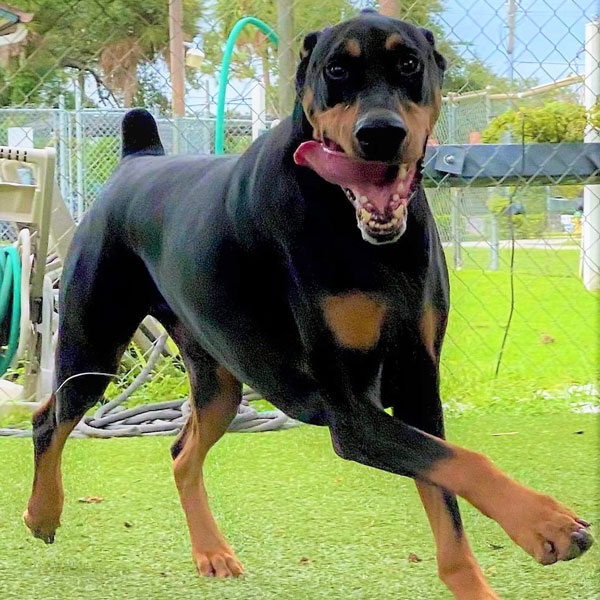
Requirements
Your dog can start agility training as early as four months of age, and there is no upper limit on age, except that he or she must be healthy and sound.
Basic obedience training is not required at the beginner level but is required at all other levels. A six-foot lead, cloth collar, and a soft pack (fanny pack) to hold treats are all needed.
Agility is open to all breeds, and so, to all sizes of dogs. The obstacles are adjusted to fit the height and ability level of your dog during training and are adjusted to fit the dog’s height during trials. You’ll do quite a bit of running along the way, and so you can expect to get a lot of exercises, along with your dog.
Classes
Basic Level
All the agility equipment was constructed onsite, to AKC standards.
We divide our agility training classes into ability levels, so as to make the best use of your time. Classes are held once per week and are kept small in size so that instruction is pretty concentrated. You and your dog will get plenty of attention and exercise. The course is open to all dogs four months of age and older who have had no previous agility training (Note: puppies are not allowed to jump obstacles and are limited to lowered obstacle heights until twelve months of age).
In the basic level, you will learn to correctly negotiate nine of the standard obstacles. In this course, the obstacles are set at low, training heights. Standard heights are not used until the intermediate level. All work is done on lead. The basic level can be completed in as little as four weeks (four weekly sessions), but normally takes eight weeks for the average dog and handler, and it may take longer for some.
Intermediate Level
Once you and your dog have completed the fundamentals of the basic level, you will learn handling techniques, such as basic sequencing (combining obstacle exercises together to create a course run). Since sequencing is performed "off-lead", proficiency in obedience is needed, including the commands for "come", "sit", "stay" and "down". Your instructor will be able to help you in these obedience areas if you should need assistance. You will be instructed on how to give timely commands and to develop smooth handling techniques. You will also learn to understand the role of body language in agility performance.
At this level, we include distance and directional training (the control of the running pattern of the dog), while giving most commands at a distance (away from the dog).
Because of the large number of obstacles and possible running patterns, most students will spend a considerable amount of time perfecting the skills of this level. In fact, the fun of running different courses each week while learning new skills is certainly an end in itself, and many students and their dogs will attend continuing sessions for the fun and exercise that agility gives them.
However, should you progress well enough and be inclined to enter competitive agility you may wish to step up to the advanced level.
Advanced Level
This level is designed to prepare you and your dog for completing the novice agility trial and is intended for those students who want to put agility titles on their dogs. Attention is given to the performance requirements of agility trials and students are prepared for competitive runs in show-and-go and sanctioned matches. Classes are small, and students are given a great deal of personalized attention.
The lessons are quite intense and can take several months, depending on the team's ability and dedication. We cover the regulation agility course, run planning, handling strategies (such as the front cross, and the blind cross) and include match simulation exercises. Fault reduction and speed training are emphasized.
If you really get even more serious about all this, we strongly recommend that you take a series of private lessons from Candi.
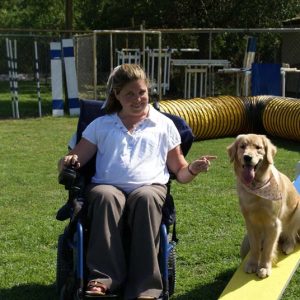
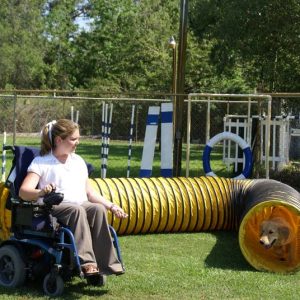
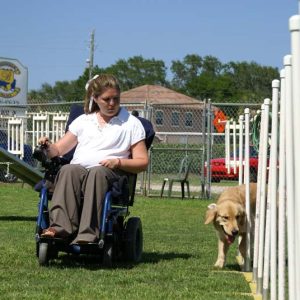
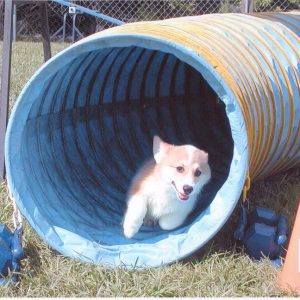
Schedule and Fees
Basic Agility
A basic course is given on Tuesday evenings at 7:00 PM and continues on each Monday evening for four weeks. A new course will be starting up about once a month.
A second basic course is sometimes taught on Saturday mornings at 9:00 AM, in the cooler weather. You may register for one or the other of these courses.
The fee is $80.00 for the four-week course, registration, and payment in advance.
Intermediate Agility
Intermediate level sessions are held on Tuesday and Thursday evenings, and have open enrollment, at a fee of $65.00 per month. At the completion of your basic course, you may sign up for training at this level.
Advanced Agility
Advanced level training is offered on Wednesday evenings, at a fee of $65.00 per month; or on an individual lesson basis, by appointment, at $20.00 per individual 1/2 hour session, on a pay-as-you-go basis.
Registration
To get on the waiting list for any of our agility classes, or to make inquiries via email, please fill out our registration request form.
Agility FAQs
We begin puppies at four months of age, and as beginners, give them special, separated instruction, since they generally have a shorter attention span than older dogs.
If you find, before attending the 1st class, that you can not begin the session, we will give you a complete refund. If you find, after attending the first class, but before the second class, that you can not continue the sessions, for any reason, your fee will be refunded, minus a $25.00 registration charge, if you notify us before the second class. There are no refunds after the second class has been taught.
We believe that anyone who will be living with the dog and attempting to control the dog should know the concepts that you are learning, the methods that you are using, and the instructions that you are practicing. There are as many ways of training dogs as there are trainers, and it is often best that the members of your family attend at least the first session of course instruction, to familiarize them with our teachers and methods. After that, we recommend that only one person handle the dog in-class training. Junior handlers (preferably 13 years or older) are welcome to participate as the prime trainers, as long as parents are present on the sidelines throughout the class to oversee the lesson. Parents may not drop off minors at classes.
Agility is open to dogs of all sizes, from Chihuahuas to Newfoundlands, and while some are faster than others, all dogs can do well. The obstacles are adjusted to size so that all dogs can succeed on the course. Even In competition at a trial, the standard time is adjusted to fit the size classes of the dogs.
At the beginner level, you should be able to control your dog while on lead. If your dog is particularly unruly (or disruptive) we may recommend obedience training. No other training is needed. When you advance to off-lead training (Intermediate level) you will need skill at obedience, and we will require that you complete our basic obedience course, or attend private lessons, if needed, to meet the course requirements. Agility classes can not be disrupted by an untrained dog, as this is unfair to the others in the class.
Not in the first class, because of individual differences in handling the dog. In the advanced classes, it is allowed only if the dog responds equally well to both spouses since otherwise it would be a distraction for the dog and might inhibit his progress.
Yes, we welcome the next generation of devotees! As long as a parent is there for the duration of each lesson, on the sidelines, we accept junior handlers. We want young people to learn to work with their dogs. Of course, your child must be able to control the dog well enough to progress in the course, and we will do our best to help in this regard.
You do not have to enter competition trials. Fun is the name of this game, and you may enroll in the advanced courses as often as you wish. Many owners find simple joy in working their dog amid the camaraderie of kindred spirits and often develop friendships with others having agility in common.
